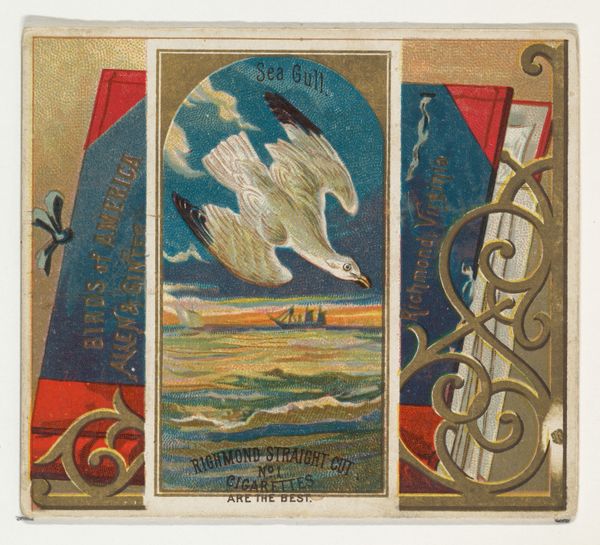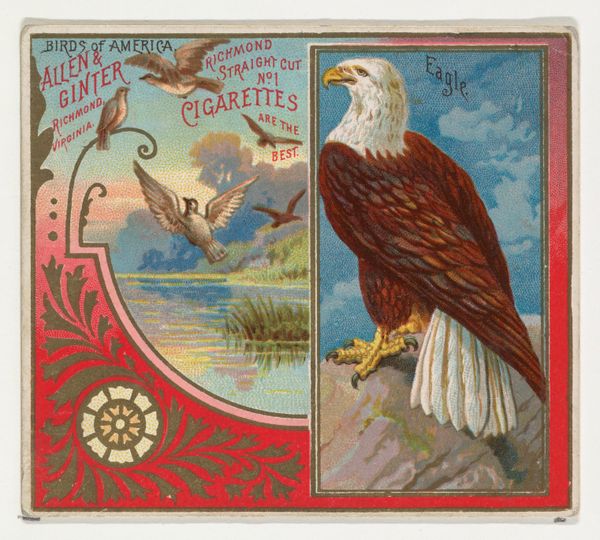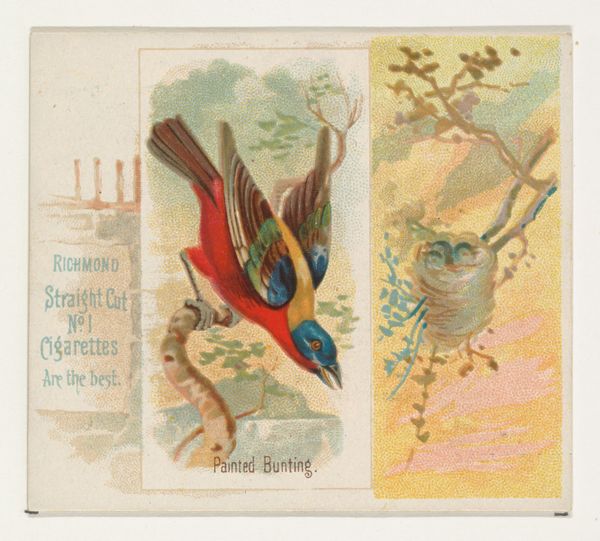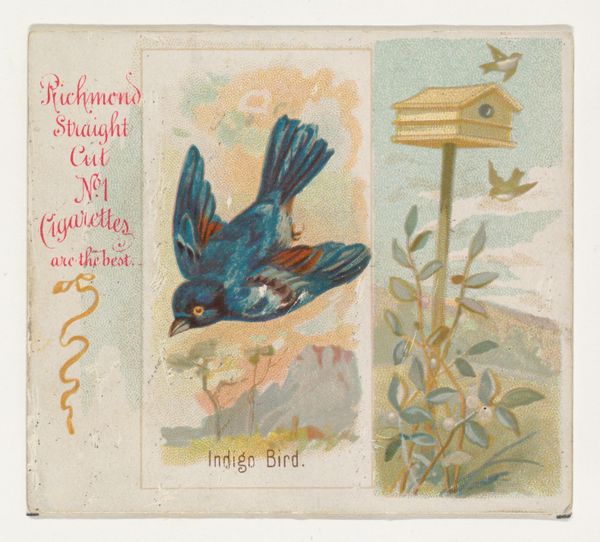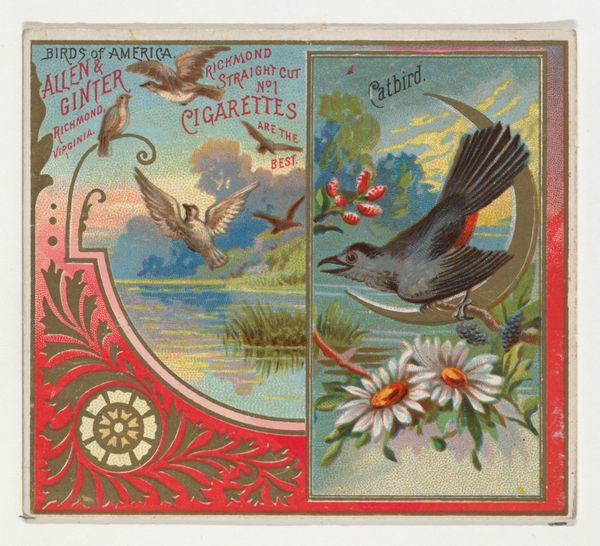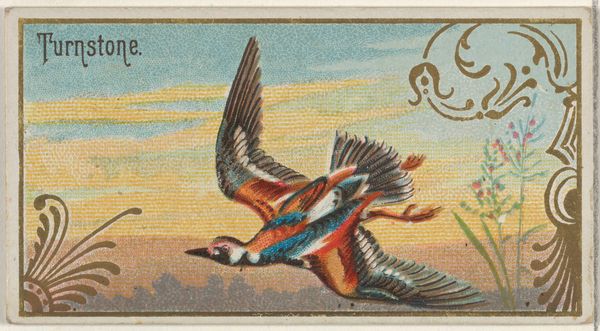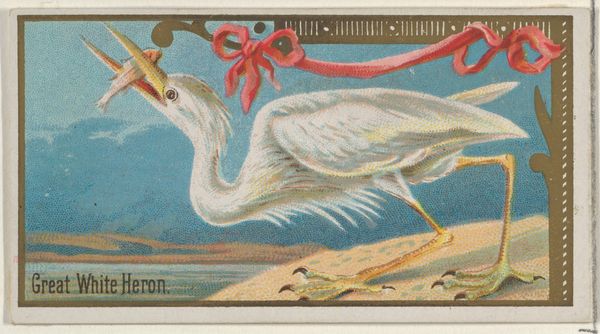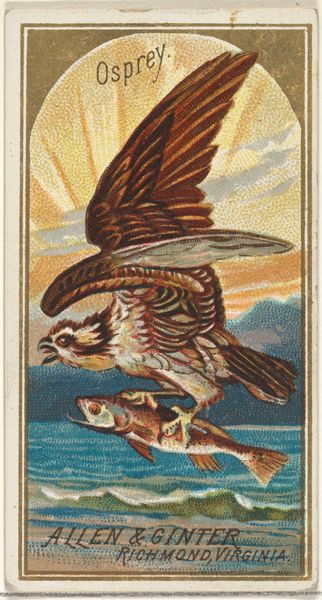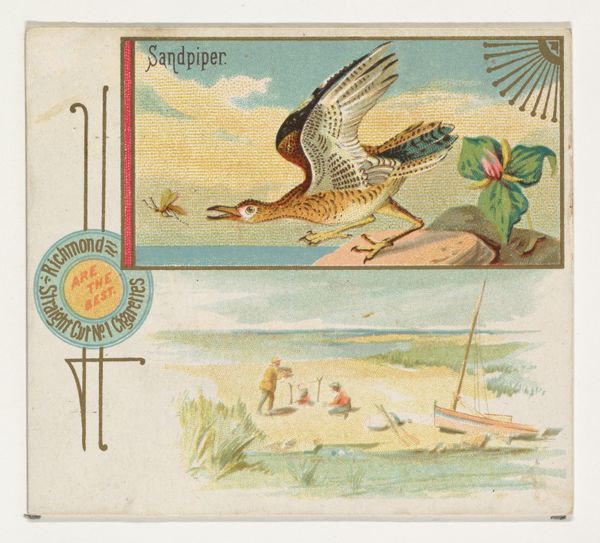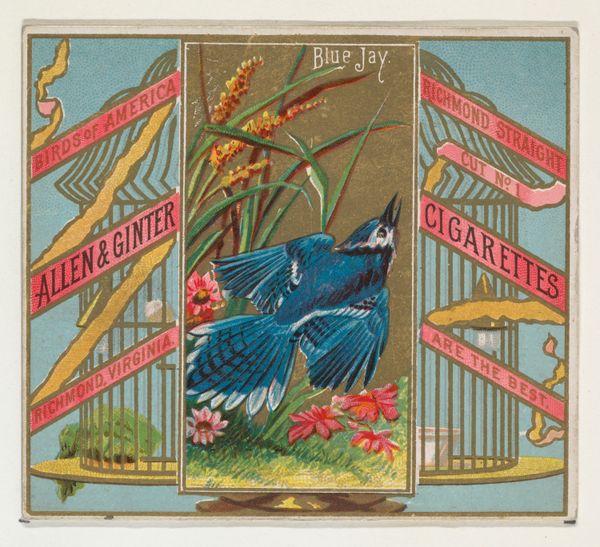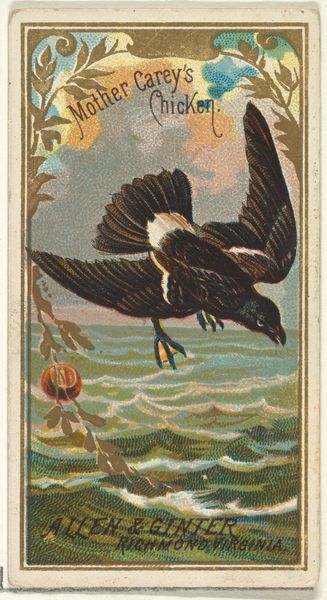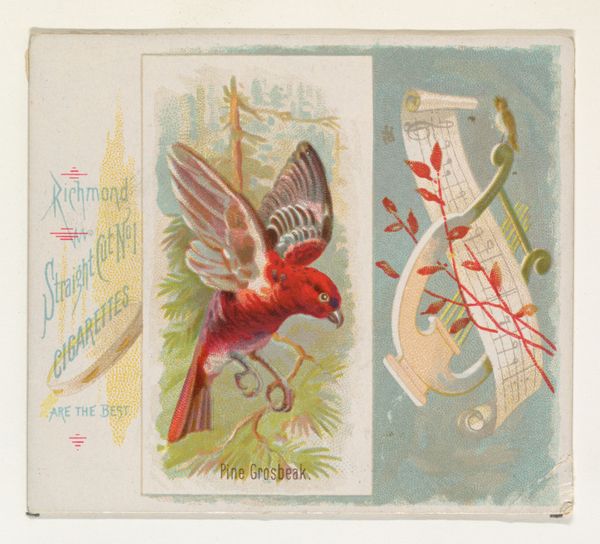
Osprey, from the Birds of America series (N37) for Allen & Ginter Cigarettes 1888
0:00
0:00
Dimensions: Sheet: 2 7/8 x 3 1/4 in. (7.3 x 8.3 cm)
Copyright: Public Domain
Curator: Here we have "Osprey, from the Birds of America series (N37) for Allen & Ginter Cigarettes," dating back to 1888 and currently residing at the Metropolitan Museum of Art. It’s quite a striking image! Editor: Yes, the sheer dynamism is immediately evident. I find the bird, talons clutching the fish, has a definite sense of fierce energy. Though, given it's printed on what's basically an advertisement, the violence is sanitized, quite stylish really. Curator: Exactly! It’s fascinating how Allen & Ginter, a cigarette company, utilized chromolithography to produce these collectible cards. Talk about using art to enhance a consumable product! Did they even care about the actual bird, the subject of the art? Editor: Well, that's the intriguing bit. The medium truly impacts our perception. The lithographic process, initially a relatively cheap method, speaks to a mass audience and widespread circulation. It challenges notions of value and the romantic artistic genius because so many were created and disseminated via tobacco consumption. Curator: Yet there's a touch of the Ukiyo-e, almost a flattened perspective… I see nature observed through a refined, aesthetic lens. The osprey transforms into something graceful, powerful—a symbol of America's untamed spirit, perhaps. It’s not strictly accurate representation. Editor: Right, because this wasn't made to explore the natural world. Think of it as paper, ink, skilled labor—transformed into an item intended to stimulate pleasure through both collecting *and* nicotine addiction! So many of these cards were produced! That sort of planned obsolescence—consume the smokes, keep the card! And this osprey and its little meal become part of that. Curator: Which brings us back to context, doesn't it? Understanding its intended function changes our interpretation entirely, from celebrating natural majesty to considering manufacture, mass consumption, and material culture. Editor: Absolutely. Examining its role within a commodity chain allows us a richer appreciation, ironically beyond what pure aesthetic contemplation might provide. Curator: Well, it gives me something to think about: this tiny collectible now opens up so many big questions. Editor: And it serves as a reminder to delve into the material realities underlying artistic expression.
Comments
No comments
Be the first to comment and join the conversation on the ultimate creative platform.
